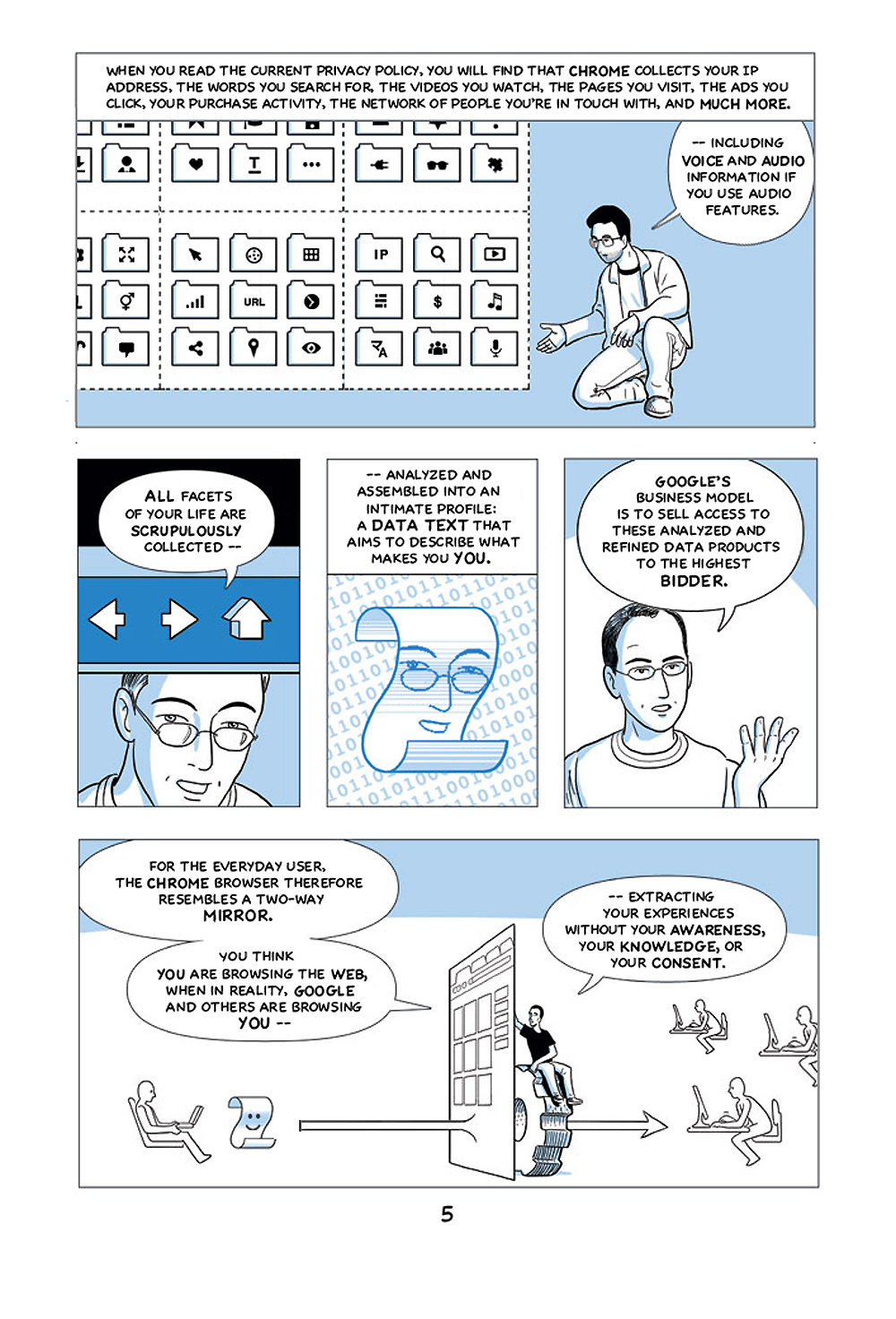This week, I have been mostly reading comics, cheap gags, and Caitlin Johnstone's incisive rants:
- BMW Heated Seats Subscription Is Real And It Costs $18 Per Month — Adrian Padeanu at motor1.com:
We've been "warned" about how subscriptions could become the automotive equivalent of a video game's downloadable content, and we're beginning to see more examples. On its ConnectedDrive Store in South Korea, BMW owners can pay a monthly fee to have a creature comfort such as heated seats. It costs ₩24,000 or approximately $18 at current exchange rates. Alternatively, you can get a one-year plan for $176 or a three-year subscription for $283. […] If you're wondering about the potential of in-car subscriptions from a business perspective, Stellantis estimates it'll make a whopping $23 billion (yes, with a "b") a year by the end of this decade. With the risk of stating the obvious, you're paying for features the car already comes with, at least if we're talking about heated seats/steering wheel.
- Contra Chrome: How Google's browser became a threat to privacy and democracy — Leah Elliot (PDF):

- Everyone’s Anti-War Until The War Propaganda Starts — Caitlin Johnstone:
Virtually everyone will tell you they love peace and hate war when asked; war is the very worst thing in the world, and no healthy person relishes the thought of it. But when the rubber meets the road and it’s time to oppose war and push for peace, those who’d previously proclaimed themselves “anti-war” are on the other side screaming for more weapons to be poured into a proxy war that their government deliberately provoked. This is because the
theory
of being anti-war is very different from the
practice
. In theory people are just opposed to the idea of exploding other people for no good reason. In practice they’re always hit with a very intense barrage of media messaging giving them what look like very good reasons why those people need exploding.
- Sutton Impact — by Ward Sutton:

- No, MMT Didn't Wreck Sri Lanka — Stephanie Kelton interviews Fadhel Kaboub, who says:
Sri Lanka, like many countries in the Global South, began the liberalization of its economy in 1977, and adopted a classic IMF-style economic development model based on exports, foreign direct investment (FDI), tourism, and remittances. This development model remained tamed during the civil war (1983-2009), but it was fully unleashed in 2009, and that is when external debt began to skyrocket, going from $16 billion in 2008 to nearly $56 billion in 2019. The value of the Sri Lankan rupee dropped from 114 to 178 LCU/USD. Thanks to a massive increase in government subsidies and transfers reaching more than 30 percent of government spending in recent years, Sri Lanka struggled to keep inflation below 5 percent. Yet, economists celebrated Sri Lanka’s great achievements with an average growth rate exceeding 5 percent in the decade after the civil war, and a real per capita GDP growth putting the country officially in the upper middle-income economy category. Sri Lanka was following the mainstream economic development model like a good student. In the decade starting in 2009, exports grew from $9.3 to $19.1 billion, tourism quintupled from 0.5 to 2.5 million visitors annually, FDI inflows quadrupled by 2018 to a record $1.6 billion, and remittances doubled to nearly $7 billion annually. These are the four engines of Sri Lanks’s economic growth, but they are also the engines driving the country deeper into the structural traps of food and energy dependency, and specialization in low value added exports. Here is how these engines constitute a trap. An increase in tourism induces more food and energy imports. An increase in remittances means more brain drain. An increase in low value-added exports induces more imports of capital, intermediate goods, fuel etc.; and an increase in low value-added FDI does the same plus the repatriation of profits out of Sri Lanka. On a global scale, these neocolonial economic traps have suctioned $152 trillion from the Global South since 1960.
- Solving Home Problems - Keeping a Tidy House — Phil Are Go!:

- Oh God It’s Going To Get SO Much Worse — Caitlin Johnstone:
The creation of the DHS disinformation board is a far more shocking and frightening development than last year’s scandalous revelation that the White House was advising social media platforms about accounts it determined were circulating censorship-worthy Covid misinformation, which was itself a drastic leap in the direction toward direct government censorship from what had previously been considered normal. We should probably talk more about how as soon as people accepted that it was fine for government, media and Silicon Valley institutions to work together to censor misinformation and rally public support around an Official Narrative about a virus, the ruling power establishment immediately took that as license to do that with a war and a foreign government as well. Like, immediately immediately. We went from a massive narrative control campaign about a virus, which people accepted because they wanted to contain a deadly pandemic, straight into a massive narrative control campaign about Russia and Ukraine. Without skipping a beat. Like openly manipulating everyone’s understanding of world events is just what we do now. Now we’re seeing increasingly brazen censorship of political dissent about a fucking war that could easily end up getting us all killed in a nuclear holocaust, and a portion of the Biden administration’s whopping $33 billion Ukraine package is going toward funding “independent media” (read: war propaganda).
- Non Sequitur — by Wiley Miller:
- Susan Collins Shocked That Brett Kavanaugh Would Ever Lie to a Woman — Andy Borowitz at the New Yorker:
WASHINGTON (The Borowitz Report)—Senator Susan Collins, who had been assured by Brett Kavanaugh in 2018 that he considered Roe v. Wade “settled law,” said today that she was “shocked” that the Supreme Court Justice “would ever lie to a woman.”
- Highly selective health nuts — Jen Sorenson:

- “But interest rates were 17% in my day!” complains man who bought house for $67,000 — The Shovel:
A 63 year old man who bought his first inner-city four-bedroom house for under $70k in the 1980s says young people complaining about interest rate rises don’t know how good they’ve got it. “Back then we had to save up for weeks, just to get enough for a deposit!” John Bradly from the eastern Melbourne suburb of Camberwell said.
- Saturday Morning Breakfast Cereal — by Zach Weinersmith:

